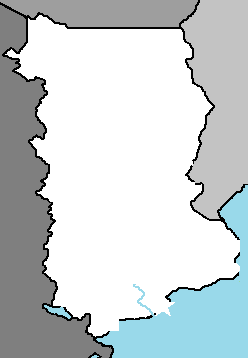Artegana: Difference between revisions
(Created page with "{{Infobox country |native_name = |conventional_long_name = Federacy of Artegana |common_name = Artegana |image_flag = Fl...") |
No edit summary |
||
| Line 3: | Line 3: | ||
|conventional_long_name = Federacy of Artegana | |conventional_long_name = Federacy of Artegana | ||
|common_name = Artegana | |common_name = Artegana | ||
|image_flag = | |image_flag = Flag of Artegana.png | ||
|alt_flag = | |alt_flag = | ||
|national_motto = | |national_motto = | ||
Revision as of 04:58, 16 December 2020
Federacy of Artegana | |
|---|---|
|
Flag | |
 | |
| Capital | Buena Vera |
| Official languages | Arteganese |
| Ethnic groups | 90.2% Arteganes
4.3% Crotos 5.4% Other |
| Demonym(s) | Arteganian |
| Government | Unitary parliamentary constitutional federation |
| Refugio Malama | |
| Santiago Messa | |
| Establishment | |
• Founding of the Empire | 1328 |
• Dissolution of the Empire | 31 May 1744 |
• Federation | 18 June 1833 |
| Population | |
• 2020 estimate | 28,833,000 |
| Date format | mm-dd-yyyy |
The Federacy of Artegana, most commonly known as Artegana, is a nation in the Coalition of Crown Albatross located on the continent of Adula, bordered by Serra Leon and Mbuntrare, with a coast on the Albarine Sea. Its capital and the third largest city, Buena Vera, is one of 52 districts that together maintain the nation's population of 28.83 million people. The nation's largest city is Tricio, located on the eastern coast. The second largest city is Bracidia.
Historically an intersection of the Bezdekia Road and the empires of Emmiria and Durnstaal, Artegana has a long and rich history. A sovereign state, Artegana is a federacy governed under a parliamentary system. It is a member of the Coalition of Crown Albatross as well as multiple other regional alliances.
